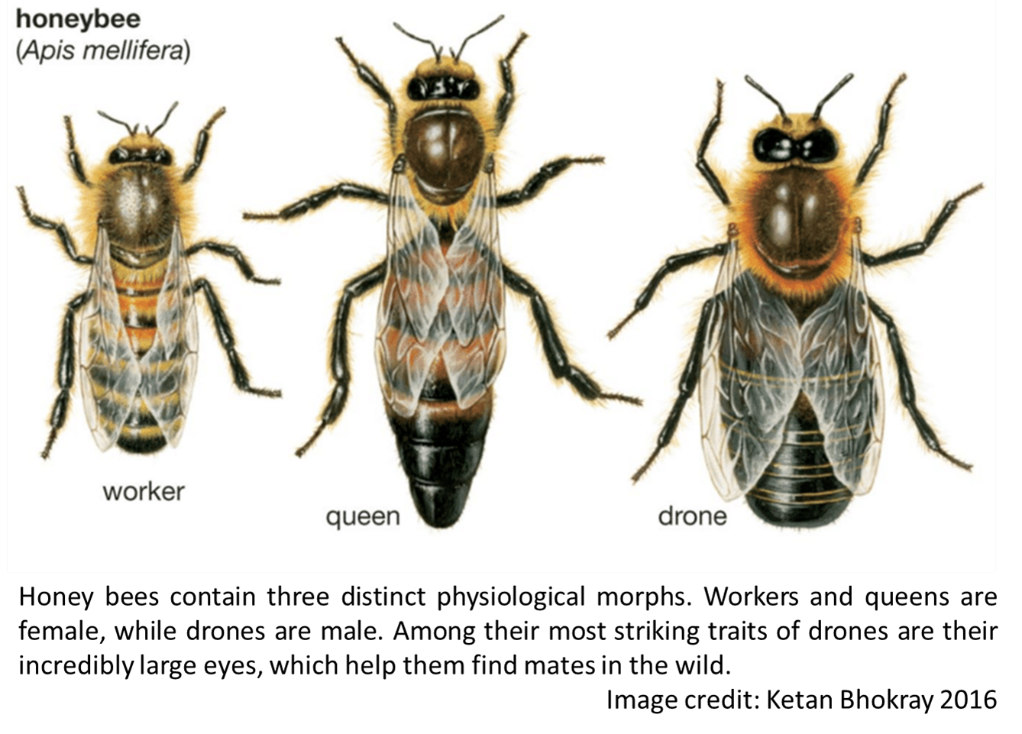By Isaac Weinberg
Most complex organisms, like humans, reproduce sexually. Sexual reproduction occurs when a sperm cell produced by a male fertilizes an egg cell produced by a female. Some organisms, like aphids, can reproduce asexually by undergoing a process known as parthenogenesis, where unfertilized eggs develop into fully functional organisms. Bees ants and wasps, however, reproduce using a combination of both strategies.

These closely related species, known as hymenopterans, must use both reproductive strategies because of their unique genetics. In most complex organisms, even those who reproduce using parthenogenesis, all individuals are diploid and have two sets of chromosomes. In hymenopterans, however, females are diploid and males are haploid, having only one set of chromosomes. Females arise from fertilized eggs, while males arise from unfertilized eggs. This unique sexual determination is called haplodiploidy. It is possible because the queen can selectively fertilize any egg she lays, and as such can determine whether each egg will develop into a male or a female.
Haplodiploidy is even weirder than it sounds because of the effects it has on each bee’s family tree. Every female bee develops following normal fertilization, and as such has a mother and a father. Male bees, known as drones, do not have a father, and receive 100% of their genetic code from their mothers. This in turn means that each female bee has two grandmothers, but only a single grandfather! Male bees not only have half the genetic material of their female counterparts, but are also less prevalent in the family tree!

This brings us to another quirk of haplodiploid reproduction. In sexually reproducing species, both sperm and egg cells are haploid. Both of these cell types are created through meiosis, a process by which diploid cells undergo a complex multistage reductional division. In hymenopterans, meiosis only occurs in female bees as the queen generates her eggs. Since drones are already haploid, their sperm cells do not need to undergo meiosis. Instead, each sperm cell contains an exact copy of the drone’s complete genome.
Where does the meiosis that generates those sperm cells occur? Within the queen as the egg that develops into a drone is produced! Putting all the pieces together, each drone is haploid, receives all its genetic material from a single parent, and is produced through meiosis. All features of a sperm cell in a species that reproduces using classical reproduction.
What is a sperm cell’s only purpose? Fertilization. Each drone leaves the nest in hope of finding a mate to pass his genes onto the next generation. If successful, each of his daughters will have inherited his complete genetic code – and will be equally related to his mother as to their own. His sons will inherit… nothing. Since each male is produced from an unfertilized egg, drones cannot have sons. The next time you see a drone sipping nectar from a flower, remember that his only purpose in life is to carry and pass on his mother’s genes to a new generation of daughters–some of whom will be future queens of their own colonies.

